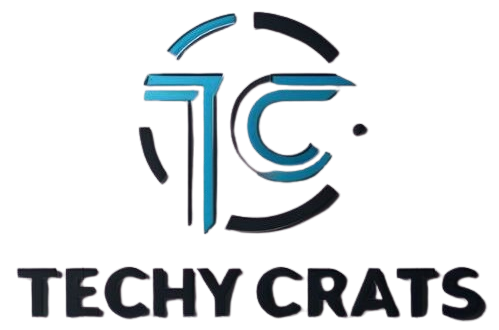Testing in Zillexit software is crucial for ensuring reliability, security, and user satisfaction. This comprehensive guide highlights the necessity of rigorous testing in maintaining seamless operations, safeguarding data, and preventing costly downtime. From unit testing to system and acceptance testing.
Each phase plays a vital role in delivering a robust, high-quality product. Automated and manual testing methods, along with industry-standard and proprietary tools, are employed to achieve comprehensive coverage and continuous improvement, ensuring Zillexit remains a trusted and efficient enterprise solution.
What is Zillexit?
Zillexit is a groundbreaking enterprise software platform designed to streamline complex business processes. Known for its versatility and reliability, Zillexit offers robust tools for project management, customer relationship management (CRM), data analytics, and customizable modules tailored to fit diverse business needs.
It acts as a comprehensive solution, providing the essential tools businesses need to operate efficiently and effectively. By integrating these capabilities, Zillexit helps organizations enhance productivity, improve decision-making, and achieve their goals, making it an indispensable asset in the corporate world.
Core Functionalities of Zillexit
Zillexit’s core functionalities are what set it apart from the competition. We’re talking about:
- Project management tools that’d make even the most seasoned PM drool
- Customer relationship management (CRM) features that turn leads into loyal customers
- Data analytics capabilities that make big data feel like child’s play
- Customizable modules that fit your business like a glove
The Significance of Testing in Software Development
Testing in software development is vital for ensuring the reliability, security, and performance of applications. It identifies and fixes bugs before they reach users, safeguarding data and preventing costly downtime. Effective testing enhances user satisfaction and trust by delivering a smooth and functional product.
It supports continuous improvement by providing insights into potential areas of enhancement. In essence, testing acts as a quality assurance backbone, making sure software meets the required standards and performs seamlessly in real-world conditions, ultimately driving business success and operational efficiency.
Why Testing is Crucial
Testing in Zillexit software is crucial for ensuring reliability, safeguarding sensitive data, maintaining user trust, preventing costly downtime, and supporting continuous improvement. It’s the foundation of a smooth-running enterprise, protecting operations from disruptions and enhancing overall business efficiency.
The Impact of Untested Software
It is a sobering fact: according to a study by Tricentis, software failures in 2017 affected 3.6 billion people and caused $1.7 trillion in financial losses. That’s not pocket change, folks. Zillexit, being at the heart of many business operations, can’t afford to be part of such statistics.
Types of Testing in Zillexit Software
When it comes to testing Zillexit software, we’re not talking about a one-size-fits-all approach. It’s more like a carefully choreographed dance of different testing types, each playing a crucial role in ensuring the software’s quality and reliability.
From unit testing that scrutinizes individual components to system testing that evaluates the entire platform, Zillexit undergoes a rigorous testing process. This multi-faceted approach is what gives users the confidence to rely on Zillexit for their critical business operations.
How It’s Performed in Zillexit
In Zillexit, testing isn’t an afterthought – it’s baked into the development process from day one. Here’s a snapshot of how it’s done:
- Unit Testing: Developers test individual components in isolation.
- Integration Testing: Modules are combined and tested as groups.
- System Testing: The entire system is tested as a whole.
- Acceptance Testing: The software is tested from the user’s perspective.
Integration Testing
Integration testing in Zillexit is where the rubber meets the road. It’s all about making sure that different modules of the software talk to each other. they’re speaking the same language. This stage catches issues that might slip through unit testing, like data transfer errors or interface glitches. For Zillexit, with its interconnected modules, integration testing is key to ensuring smooth operations across the platform.
How It’s Performed in Zillexit
In Zillexit, integration testing is a meticulous process that involves both automated and manual techniques. The development team uses a combination of top-down and bottom-up approaches to ensure comprehensive coverage.
They start by testing the interactions between core modules, then gradually expand to include peripheral components. This method allows them to identify and isolate issues quickly, ensuring that each part of Zillexit works harmoniously with the others.
System Testing

System testing is where Zillexit flexes its muscles. This stage evaluates the software as a complete, integrated system to verify that it meets specified requirements. It’s like taking Zillexit for a test drive under real-world conditions, pushing it to its limits to ensure .
It can handle whatever users throw at it. System testing in Zillexit covers everything from functionality and performance to security and scalability, providing a holistic view of the software’s capabilities.
Definition and Purpose
System testing is the phase where Zillexit is evaluated as a whole, end-to-end solution. Its purpose is to verify that the entire system meets the specified requirements and works as expected in various scenarios. This stage of testing aims to uncover any system-level issues that might have been missed in earlier testing phases. It’s about ensuring that Zillexit not only functions correctly but also performs efficiently under different conditions and workloads.
How It’s Performed in Zillexit
In Zillexit, testing is performed through a structured process: Unit Testing verifies individual components, Integration Testing ensures module interoperability, System Testing evaluates the entire platform’s performance, and Acceptance Testing confirms the software meets user requirements.
Acceptance Testing
Acceptance testing is the final hurdle before Zillexit gets the green light. It’s where the software faces its toughest critics – the end-users. This stage is all about making sure Zillexit not only meets technical specifications but also satisfies the practical, day-to-day needs of the businesses it serves. It’s the difference between a technically sound product and one that users actually want to use.
Definition and Purpose
System testing evaluates Zillexit as a complete solution to ensure it meets specified requirements. It aims to verify that all components function together seamlessly under real-world conditions, addressing both functional and performance aspects to guarantee reliability and user satisfaction.
How It’s Performed in Zillexit
In Zillexit, acceptance testing involves close collaboration between the development team and end-users. Here’s how it typically unfolds:
- User Acceptance Testing (UAT): Real users test the software in a staging environment.
- Alpha and Beta Testing: Selected users try out new features before general release.
- Business Scenario Testin: The software is tested against real-world business processes.
- Regulatory Compliance Testing: Ensures Zillexit meets industry standards and regulations.
Automated Testing in Zillexit
Automated testing is the secret sauce that keeps Zillexit at the top of its game. It’s like having a tireless army of testers working round the clock to ensure every nook and cranny of the software is functioning perfectly. In the fast-paced world of enterprise software, where updates and new features are constantly being rolled out, automated testing is what allows Zillexit to maintain its high standards of quality and reliability.
Benefits of Automated Testing in Zillexit
The benefits of automated testing in Zillexit are numerous and significant. Automated testing ensures increased coverage, allowing for faster and more consistent execution of tests. It enhances efficiency by catching issues early, reduces manual errors, and supports scalability as the software evolves. Additionally, it integrates seamlessly with CI/CD pipelines, fostering continuous quality improvement.
Manual Testing in Zillexit
While automated testing is crucial, manual testing in Zillexit adds that essential human touch. Indeed, it’s where creativity meets technology, allowing testers to explore the software from a user’s perspective. Furthermore, manual testing catches those nuanced issues that automated tests might miss—issues that can ultimately make or break the user experience. Consequently, in Zillexit, where user satisfaction is paramount, manual testing plays a vital role. Therefore, it ensures the software not only functions correctly but also delights its users.
Benefits of Manual Testing in Zillexit

Manual testing in Zillexit provides valuable user-centric evaluation, flexibility in adapting test cases, and insights into usability. It helps uncover nuanced issues that automated tests might miss, offers detailed bug context, and discovers edge cases through creative exploration. This human touch ensures a more intuitive and satisfying user experience, complementing automated efforts effectively.
Testing Tools Used in Zillexit
The arsenal of testing tools used in Zillexit is impressive, to say the least. It’s like a well-equipped workshop where every tool has its place and purpose. From automated testing frameworks to manual testing aids, these tools form the backbone of Zillexit’s quality assurance process. They enable testers to work efficiently, catch issues early, and ensure that every release of Zillexit meets the high standards expected by its users.
Overview of Popular Testing Tools
Popular testing tools include Selenium for web automation, JUnit for Java unit tests, Jenkins for CI/CD, JIRA for issue tracking, and LoadRunner for performance testing. These tools enhance testing efficiency and ensure robust software quality through diverse functionalities.
Specific Tools Used in Zillexit
In Zillexit, specific tools include ZillTest for tailored testing, ZillMonitor for real-time performance tracking, and ZillSim for simulating business scenarios. These custom tools, combined with industry standards like Selenium and JIRA, ensure robust software quality.
Best Practices for Testing in Zillexit Software
When it comes to testing Zillexit software, it’s not just about running tests – it’s about having a strategic approach that ensures comprehensive coverage and meaningful results. Best practices in Zillexit testing are like the North Star for quality assurance teams, guiding them towards creating a robust, reliable product. These practices have been honed through years of experience and are continually evolving to keep pace with the software’s growth.
Planning and Designing Tests
Effective test planning and design are the foundations of successful testing in Zillexit. Here’s what it involves:
- Requirement Analysis: Thoroughly understanding the software’s specifications and user needs.
- Test Strategy Development: Creating a roadmap that outlines testing objectives, methods, and resources.
- Test Case Design: Crafting detailed test cases that cover all aspects of Zillexit’s functionality.
- Risk-Based Testing: Prioritizing tests based on potential impact and likelihood of issues.
- Test Data Preparation: Ensuring a variety of realistic data sets for comprehensive testing.
Executing and Documenting Tests
Executing and documenting tests involves systematically running test cases, recording results, and noting observations. It includes detailed documentation of each step, logging defects, ensuring reproducibility, and managing version control. Proper execution and documentation are essential for maintaining software quality.
Analyzing and Reporting Results
Analyzing and reporting results involve examining test outcomes to identify patterns, track metrics, and perform root cause analysis. Clear reporting to stakeholders ensures transparency, informs decision-making, and guides continuous improvement for better software quality and performance.
Challenges in Testing Zillexit Software
Testing Zillexit software presents several challenges. Firstly, the complexity of integrating numerous modules and third-party systems often leads to integration issues. Furthermore, generating diverse and realistic test data is crucial yet difficult to achieve. Similarly, performance testing under varying loads is essential but challenging to simulate accurately. Additionally, frequent updates necessitate maintaining backward compatibility, which can be tough. Moreover, rigorous security testing is required to protect sensitive data, adding another layer of complexity. Consequently, overcoming these obstacles demands a combination of technical expertise, creative problem-solving, and effective strategies.
Common Obstacles Faced
Common obstacles in Zillexit testing include integration complexity, diverse data requirements, performance under load, rapid updates, and security challenges. Addressing these issues requires strategic planning, advanced tools, and continuous adaptation to ensure effective and thorough quality assurance.
Strategies to Overcome These Challenges
To overcome Zillexit testing challenges, use modular testing for better focus, generate diverse data with automation, conduct cloud-based load testing, implement CI/CD for continuous testing, and employ collaborative security testing with experts to address security concerns effectively.
The Future of Testing in Zillexit Software

The future of testing in Zillexit software promises transformative advancements. With AI-driven testing optimizing test case selection and predictive analytics foreseeing potential issues, quality assurance will become more proactive. Integration with IoT and VR will enhance testing environments.
While blockchain technology will ensure secure test data management. Advancements like self-healing test automation and continuous testing in production will revolutionize how we maintain software quality. Staying ahead of these trends will be crucial for ensuring Zillexit remains at the forefront of enterprise software excellence.
Emerging Trends
Emerging trends in Zillexit testing include AI-driven test optimization, IoT integration, shift-left testing, blockchain for data management, and chaos engineering. These innovations enhance predictive accuracy, streamline processes, and build resilient, user-focused software solutions.
Potential Advancements
Future advancements in Zillexit testing may include quantum computing for rapid performance simulations, VR for immersive user experience assessments, self-healing test automation, predictive analytics to prevent bugs, and continuous testing in live environments for real-time issue resolution.
Conclusion
Rigorous testing is essential for Zillexit software to ensure reliability, user satisfaction, and operational efficiency. Consequently, from unit testing to acceptance testing, each stage plays a critical role in verifying the software’s performance and functionality. Moreover, automated and manual testing approaches, combined with advanced tools and methodologies, help identify and address potential issues before they impact users.
Therefore, by embracing comprehensive testing practices, businesses can mitigate risks, enhance software quality, and maintain a competitive edge in the fast-evolving enterprise software landscape. Ultimately, quality assurance remains the cornerstone of successful Zillexit deployments.
FAQs
How often should we test our Zillexit implementation?
Testing should be an ongoing process. While major tests are typically conducted before updates or new releases, continuous monitoring and regular check-ups are crucial for maintaining optimal performance.
Can small businesses afford comprehensive Zillexit testing?
While the scale might differ, even small businesses can implement effective testing strategies. Many automated tools offer scalable pricing, and the long-term benefits of thorough testing far outweigh the initial investment.
What’s the biggest mistake companies make when testing Zillexit?
One common pitfall is focusing solely on functionality while neglecting user experience. Remember, a feature that works perfectly but is difficult to use can be just as problematic as a broken one.
How does Zillexit testing compare to testing other enterprise software?
While many principles are similar, Zillexit testing often requires a more integrated approach due to its comprehensive nature. The interconnectedness of Zillexit’s modules demands a holistic testing strategy.

